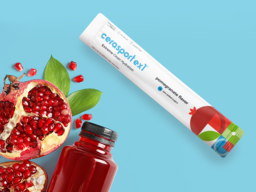OBJECTIVE:
The purpose of this study was to experimentally develop and clinically evaluate the safety and potential usefulness of a rice-based, short glucose polymer oral rehydration solution (ORS), Amylyte, in the treatment of acute diarrhea. Amylyte has a similar osmolality but a higher caloric density than the WHO ORS.
METHODS:
Different amounts of rice were cooked in 500 ml of water containing salts (1.5 g NaCl, 600 mg KCl, and 150 mg CaCl2) with varying amounts of thermophilic amylase (252,500 modified Wohlgemuth units). Amylase (25 mg) thinned the gluey rice water when 100 g of rice was cooked in 500 ml of water for 10 minutes. The volume of the resultant supernatant (Amylyte) was approximately 250 ml. A two-part, clinical case study was performed. In study 1, 12 children with diarrhea and mild dehydration were studied to determine the safety of Amylyte. In study 2, Amylyte and the WHO ORS were given to 24 and 31 male children with acute diarrhea and moderate to severe dehydration, respectively.
RESULTS:
92-96% of the rice amylose and amylopectin were converted to short polymers of glucose (3-9 molecules of glucose). The osmolality of 7,994 packages used to make the Amylyte solution ranged between 277-340 mOsm/kg. The mean electrolyte composition was Na+ = 68 mEq/L, K+ = 20 mEq/L, Cl = 73 mEq/L, the caloric density 425 kcal/L and rice proteins 0.7 g/L. In study 1, 12 children with diarrhea and mild dehydration were rehydrated successfully with Amylyte ORS and the diarrhea ceased within 48 hours. None developed clinical features of carbohydrate intolerance. In study 2, an open-label clinical case study, children with acute diarrhea given Amylyte ORS had significantly less stool output than children given the WHO ORS.
CONCLUSIONS:
Amylyte ORS has the advantages of a higher caloric density than the WHO ORS and shares a simple preparation of appropriate osmolality and electrolyte composition. It can safely and effectively rehydrate children with acute diarrhea and dehydration.



